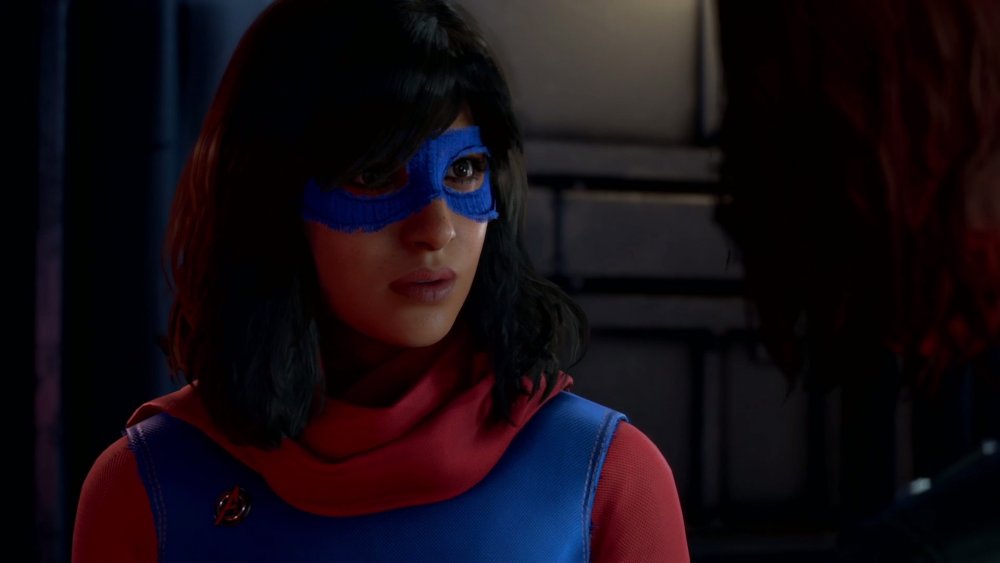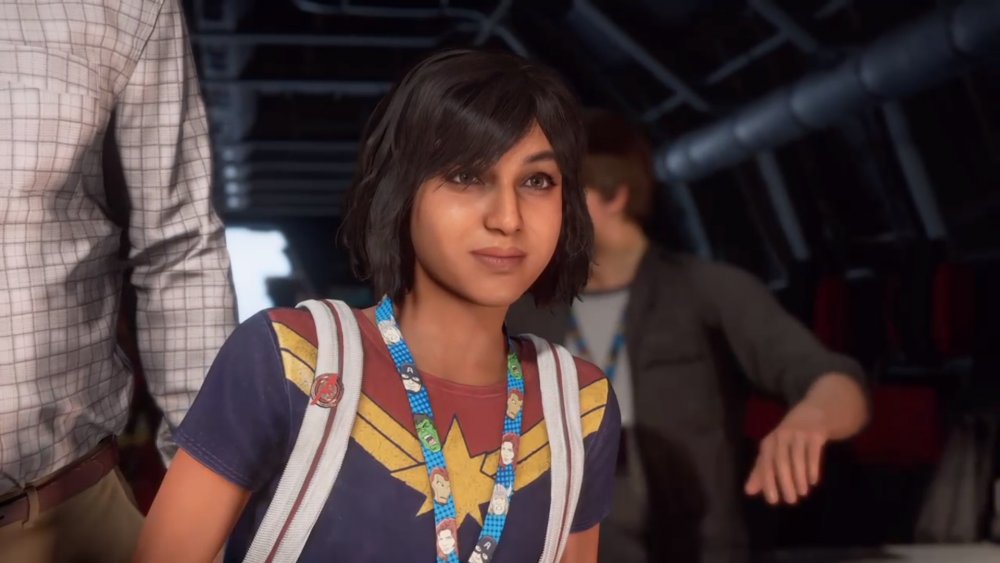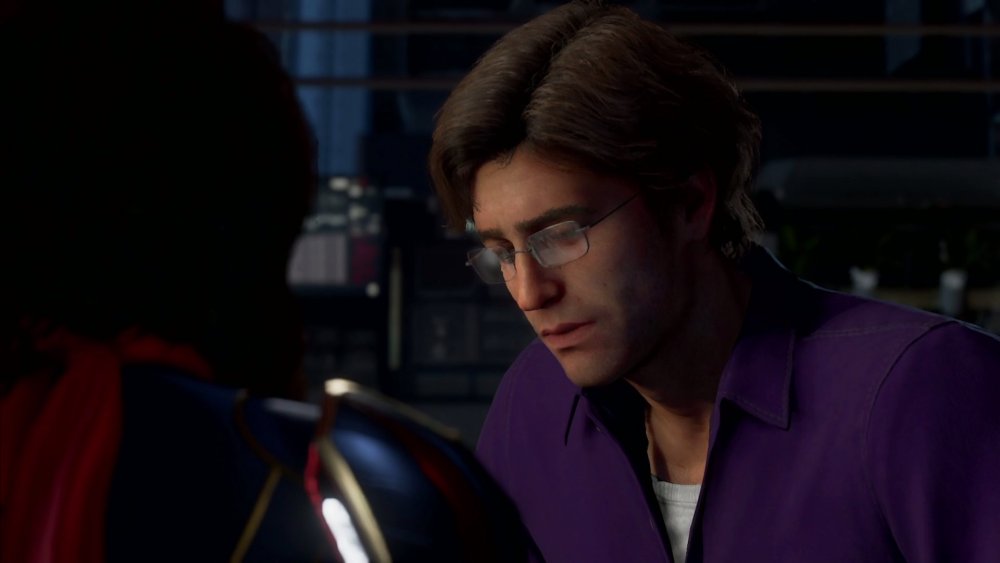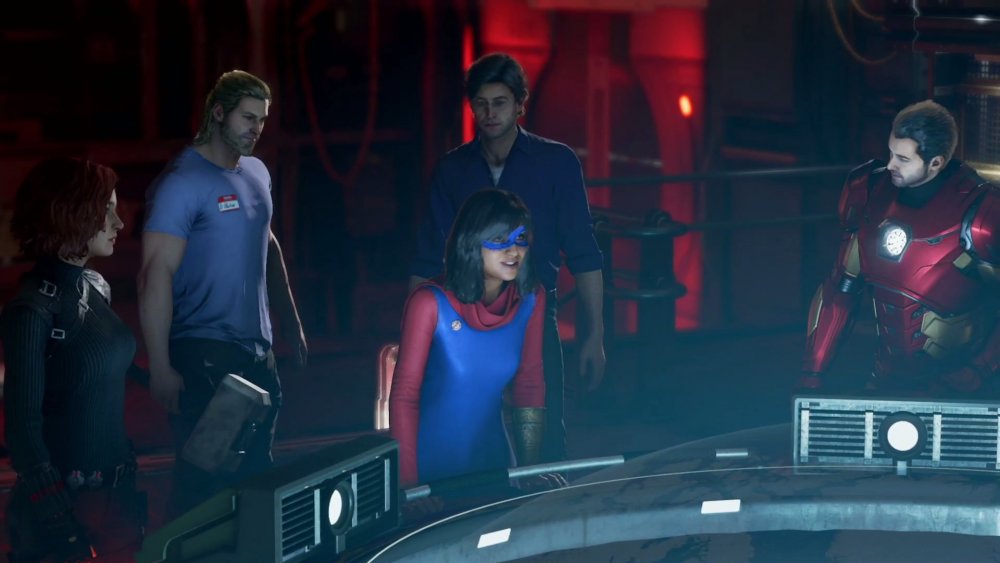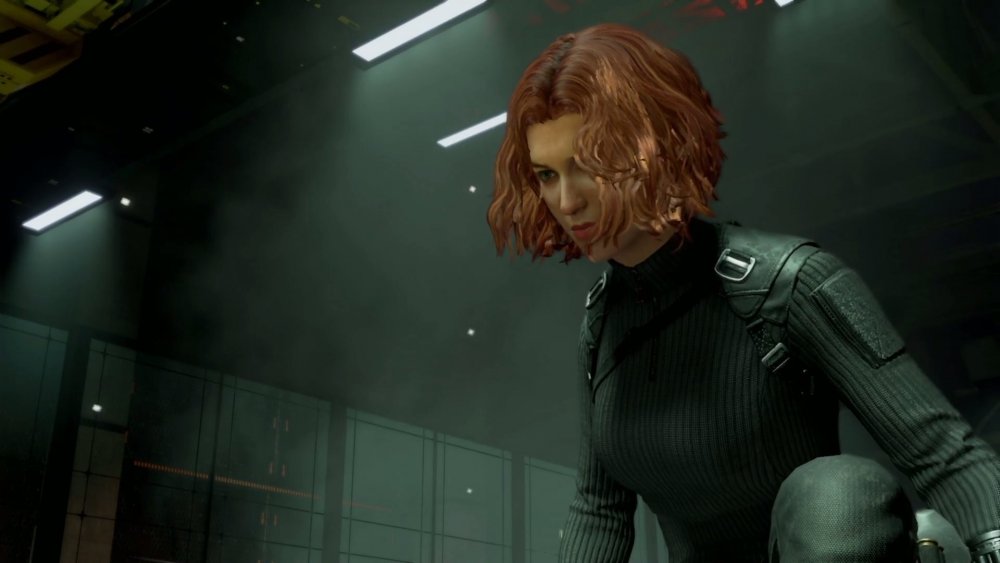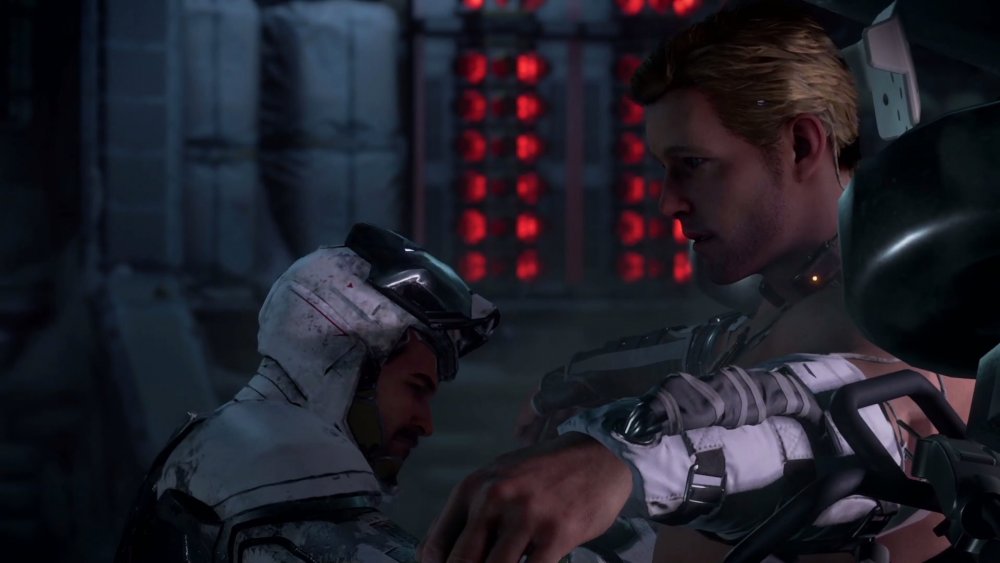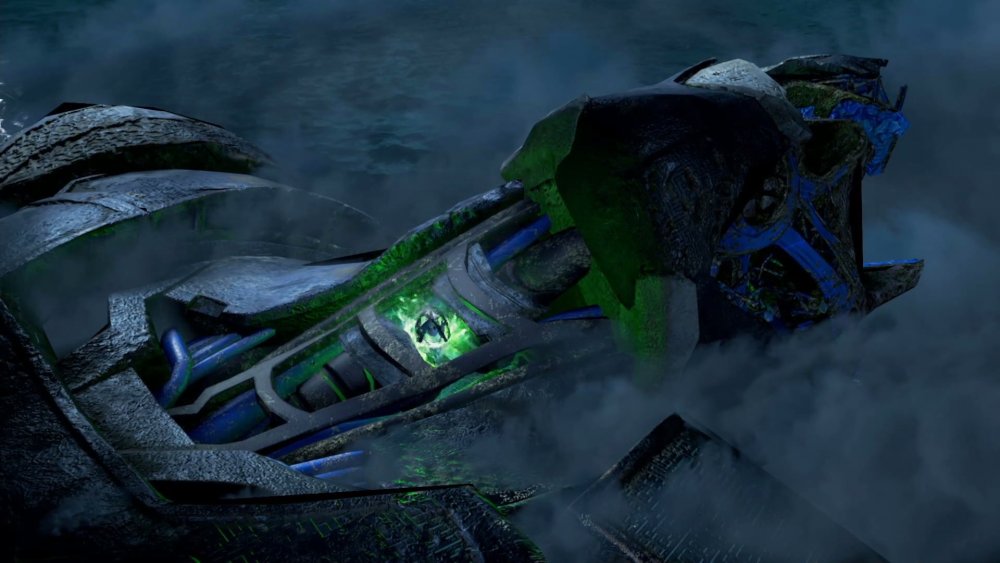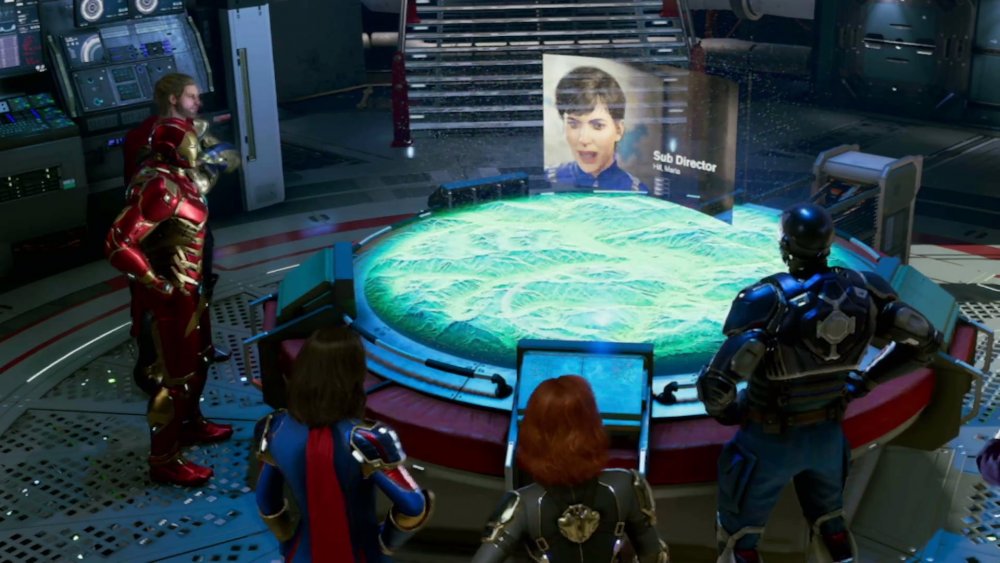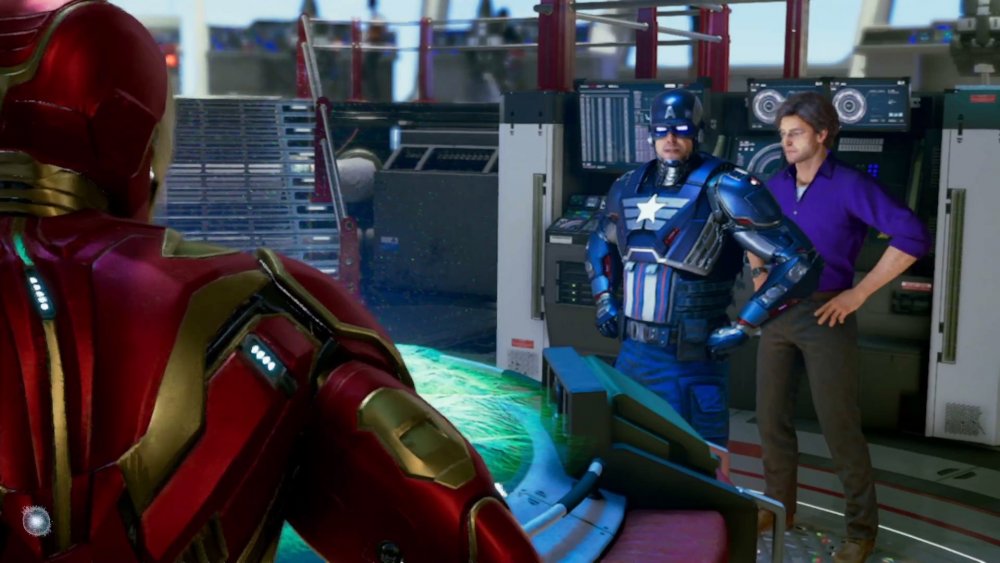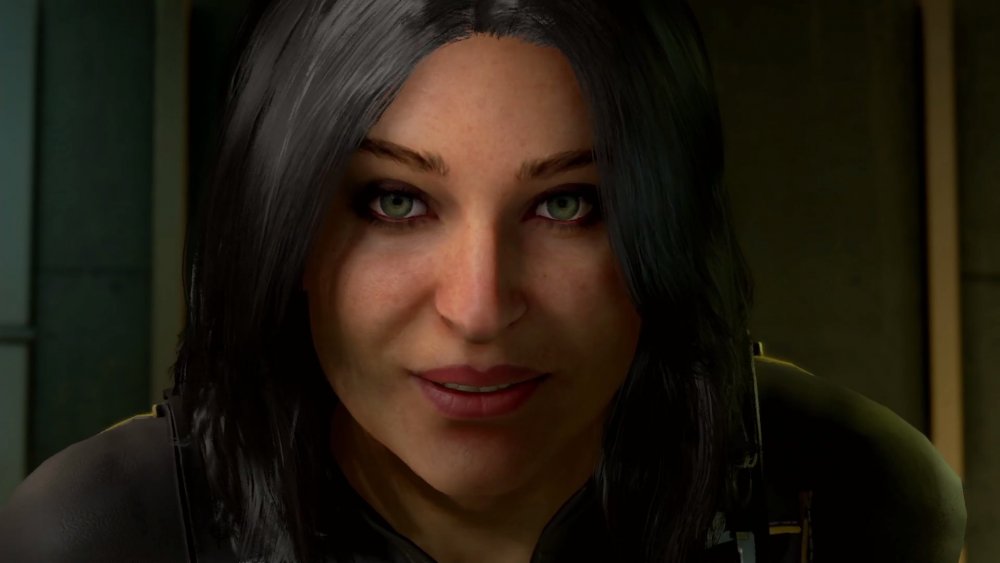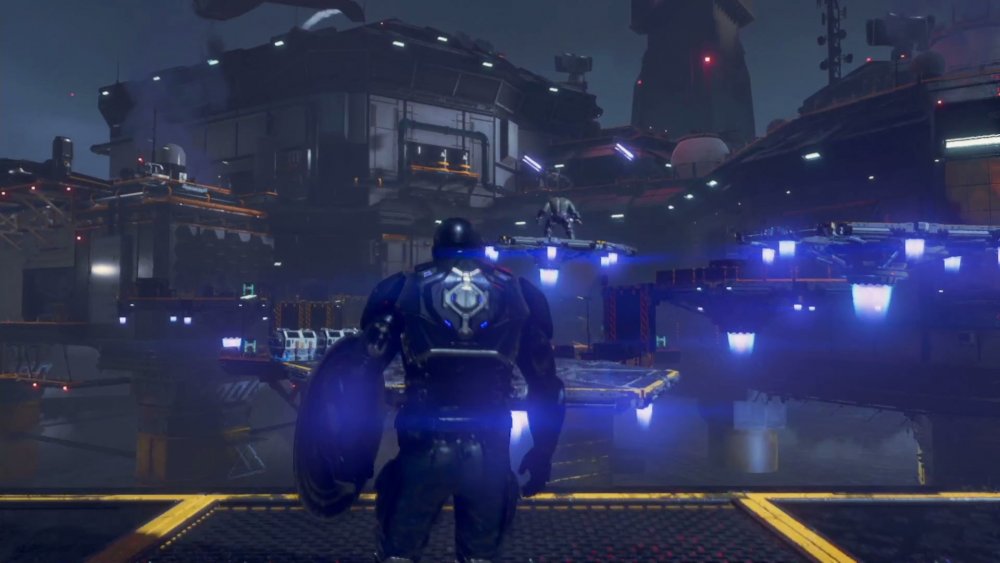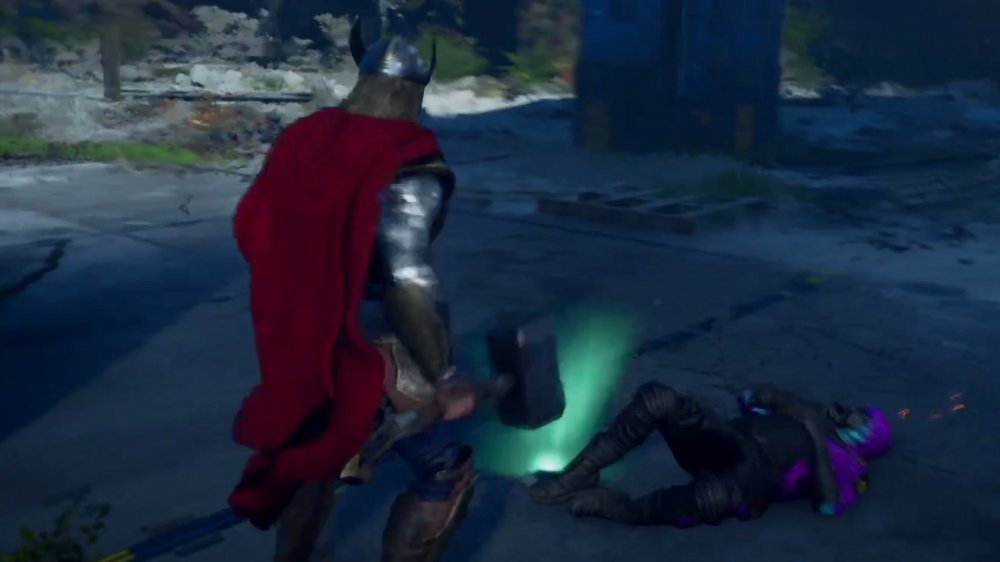The Ending Of The Avengers Video Game Explained
The Marvel Cinematic Universe has been going strong for a while now, with the Avengers trilogy in particular wrapping up in 2019. With the on-screen Avengers fresh in the minds of fans, many were eager to catch a glimpse of Marvel's Avengers, a game based on the supergroup developed by Crystal Dynamics.
How would Marvel die-hards respond to these new Avengers? That was the big question after the developers showed off the title for the first time at E3 2019. Some were excited at the prospect of playing as Iron Man, Thor, and the rest. Others, upon seeing early footage, compared the video game Avengers to "dollar store versions" of their movie counterparts.
Marvel's Avengers is officially out in the wild, and its quality seems to have surprised a lot of people. Positive reviews are already rolling in from The Washington Post and IGN about its campaign, which tells a charming story about Kamala Khan and her journey from Avengers fangirl to legit superhero. Now that we've played Marvel's Avengers ourselves from beginning to end, here are some of the key takeaways and what they might mean for the future.
Differences make us stronger
The Avengers are the quintessential example of how very different people can come together and rally around a cause. Iron Man is a tech genius whose superpower is his brain and the things he can create. Thor is an actual god from another world. Captain America is a supersoldier created by the government. The Hulk is a scientist-turned-giant monster, depending on his mood. And Black Widow is a former spy who — like Iron Man — has no superpowers herself, but uses her skills in espionage and combat to contribute all the same.
Throughout the Marvel's Avengers story, Crystal Dynamics really hammers home just how different the main characters are, and how they still manage to unite in times of crisis. The treatment Inhumans receive in the game further explores this lesson. Inhumans are typical people — sons, daughters, brothers, sisters, and so on — who were in the wrong place at the wrong time on A-Day. The accident that took place granted them superpowers, and for that, they're scapegoated by A.I.M. and treated as lepers by others. But as Kamala Khan so beautifully demonstrates, they are still people and can still play very important roles in society.
Khan saved Tony and Bruce
Aside from Khan, two other characters really get their time to shine in Marvel's Avengers: Tony Stark and Bruce Banner. Both walked away from A-Day without hope, and spent their days in solitude until Khan came along.
As Banner put it later in the game, he'd all but quit. Following A-Day, he spent a great deal of time as the Hulk hiding in the Chimera — the Avengers' then-broken down helicarrier — while the world outside changed drastically. Similarly, Stark isolated himself in the desert and seemed content to live in a reality where the Avengers were gone forever.
Khan brought the two back from the brink. She managed to convince Banner there was something worth fighting for, and that he could embrace the Hulk once more to do it. And she got Tony — ever the narcissist — to return and not only be a team player, but even show some emotion at times. The story in Marvel's Avengers just wouldn't work without Khan. She gets the band back together, and ends up saving the day for everyone else, too.
Khan finally belongs
Another big story element revolves, unsurprisingly, around Khan and her place in the world. As a Pakistani American girl from Jersey City, Khan already felt like an outsider of sorts. Add in her love of comics and her adoration of the Avengers, and you can start to see why she might have felt like she was different than everyone else.
Being present on A-Day — and becoming an Inhuman as a result — only exacerbated her feeling of being an outcast. For a long time, she had to hide who she was and the powers she possessed. But upon meeting the Avengers, she found purpose and a sense of belonging.
Khan no longer had to keep her powers a secret, or keep her childhood dream of being a superhero limited to the posters on her bedroom wall. With the Avengers, she found a group of individuals committed to the same cause as her: doing good. With the encouragement of her newfound friends, Khan was finally able to come into her own and sort out her identity.
The other Avengers played lesser roles
For a campaign story about a group of heroes, the narrative really only gives you a close look at three of them: Khan, Banner, and Stark. Khan is by far the most fleshed-out character in the tale, but Banner and Stark get a large share of the focus, as well. Unfortunately, not all of the Avengers received the same amount of love, which could make them harder to connect with.
Black Widow reemerges part way through the campaign, suddenly showing up to offer assistance when A.I.M. captures Khan. The same goes for Thor, who is present for a stretch while the group fends off an attack on the Chimera, only to disappear until the later parts of the game. Captain America, too, takes a backseat, an understandable choice as he presumably dies at the very beginning.
Captain America, Thor, and Black Widow, by virtue of being brought into the fold later, don't get as much screen time as Khan, Banner, and Stark. Some may feel their character development suffers as a result.
Captain America wasn't dead after all
This twist may either shock you completely or elicit a yawn, but here it goes: Captain America didn't actually die in Marvel's Avengers. Sure, the developers made it look that way at the very beginning, and that early story beat — shown to fans about a year before the game's release — concerned some Cap fans. But Crystal Dynamics wouldn't go through all the trouble of creating Captain America just to kill him off, right?
As it turns out, the A-Day explosion that had reportedly killed Cap failed to do the job. Instead, A.I.M. captured Captain America and kept him prisoner in an outer space satellite laboratory called Ambrosia. There, A.I.M. scientist (and wannabe diabolical villain) Monica Rappaccini used Captain America's blood to conduct experiments. Iron Man eventually showed up to rescue Cap from A.I.M.'s clutches, thus allowing him to become a playable character again later in Marvel's Avengers.
Is M.O.D.O.K. really gone?
In the aftermath of A-Day, George Tarleton — one of the minds behind the new energy form, Terrigen — decided superheroes should no longer exist. Tarleton felt their powers could not be controlled, and in A.I.M., he saw a vehicle for delivering a cure to Inhumans that would strip them of their newfound abilities.
When a cure didn't pan out, he turned to more drastic measures: killing off Inhumans entirely. When the Avengers reassembled to stand in his way, he became M.O.D.O.K., or "Mental/Mobile/Mechanized Organism Designed Only for Killing."
At the end of Marvel's Avengers, M.O.D.O.K. is seemingly defeated at the hands of an embiggened Khan. But don't assume you've seen the last of Tarleton's new form just yet. During the game's credits, a scene shows a small door on M.O.D.O.K.'s giant statue-esque robot opening up. Based on the small pod that shoots out of it like a missile, it seems M.O.D.O.K. may not be done causing problems for the Avengers just yet.
The Avengers and S.H.I.E.L.D. are regaining strength
It's not an exaggeration to say the both the Avengers and S.H.I.E.L.D. were crippled after the events of A-Day. The Avengers believed they'd lost a key member and disbanded entirely, scattering to the wind. S.H.I.E.L.D. director Nick Fury was presumed dead, as well, leaving that agency without its figurehead. Fortunately, actions taken during Marvel's Avengers helped bring both groups back together again.
Khan, of course, helped reunite the Avengers. In the early part of the story, Khan and Banner located a S.H.I.E.L.D. bunker containing protocols left by Director Fury in the event of his demise. These protocols were sent to sub-director Maria Hill. At the end of the campaign, post credits, Hill informs the group that "S.H.I.E.L.D. is still getting back on its feet," and offers the Avengers some field ops assignments to help the cause.
Some of these field ops can be taken on in Marvel's Avengers' endgame, and there's a chance you might see additional assignments added in future content drops.
The world hasn't forgiven the Avengers yet
Though you may think the Avengers saved the day, and thus are due some goodwill from the world at large, it doesn't appear that will be the case at first. As Stark mentions in a post credits sequence, A.I.M. still has the government on its side, as well as public opinion.
How is that possible when, during the game, A.I.M. forces were at a standoff with the military? That is a great question. But as it stands, the Avengers are still the bad guys in the eyes of many, and they'll have to do some work to get everyone feeling happy to see them in action again.
The Avengers' redemption arc could continue in further story packs released down the line, or it could be implied over time that, by battling A.I.M. and further uncovering its secrets, you'll eventually reach a point where the Avengers are considered heroes again. You'll have to wait and see how Crystal Dynamics plans to address this story element and what new threats might emerge if the Avengers are able to take out A.I.M. for good.
Rappaccini lives
Monica Rappaccini's story in Marvel's Avengers is full of twists and turns. At the start, she appears to be Banner's love interest — a fellow scientist assisting work on the Terrigen project. After A-Day, she presents herself as a key figure at A.I.M., where she is purportedly working to develop a cure for Inhumans.
You eventually discover Rappaccini does not have pure motivations. In fact, she wasn't even developing a cure. Rappaccini wants to harvest Inhuman powers for her own twisted pursuits. She even went so far as to experiment on Tarleton himself without him realizing it. Tarleton eventually caught on, though, and injected Rappaccini with the same Captain America blood he'd been given repeatedly before leaving Rappaccini to die.
Rappaccini does not die, however. In fact, the end of Marvel's Avengers reveals her elevation to the role of "Scientist Supreme" at A.I.M. She has even bigger plans for the organization now that Tarleton is apparently out of the picture, including cloning, time travel, and more. Marvel's Avengers players will undoubtedly see more of Monica Rappaccini in the future, as A.I.M. — especially with her in charge — is still a very big threat.
Crystal Dynamics proved it can do superheroes
Crystal Dynamics is largely known for its work on the Tomb Raider franchise — games in which a very mortal Lara Croft can die in any number of gruesome ways. Croft is known more for her stealth and her shooting, which makes the superpowered brawlfest that is Marvel's Avengers quite a departure. The studio proved, however, that it can absolutely make this kind of game.
Are there still bits and pieces of those prior Crystal Dynamics titles in this one? Absolutely. The escape-scene set pieces, where the environment falls apart or explodes around you as you try to get out with your life, are highly reminiscent of past Tomb Raider adventures. Croft also had an upgrade tree of sorts, which isn't far off from the trees present for each of Marvel's Avengers' heroes.
The combat and gear systems, however, seem to be something different than Crystal Dynamics is used to. The studio still manages to make it work, blending Spider-Man-style fights with the gear chase found in Destiny 2 or The Division 2 to create something that feels unique for a superhero game.
Can Marvel's Avengers make the "live service" model work?
Those who've played through at least some of Marvel's Avengers' campaign seem enamored by it. The Washington Post said it's "shaping up to be well worth the cover charge," while IGN stated, "On its own, this campaign is actually a seriously fun superhero brawler." The question that remains, however, is whether Marvel's Avengers can capitalize on the success of its campaign and continue on as a live service game.
Unlike Marvel's Spider-Man for the PlayStation 4, Marvel's Avengers isn't a title meant to be played once and then put aside. "Live service" means Avengers will continue getting updates well into the future. Crystal Dynamics will add new characters, explore fresh stories, and inevitably graft other elements onto the core experience.
While the campaign has garnered praise, some already have doubts about whether Marvel's Avengers will remain enjoyable in the long term. That same IGN review, for instance, called some of the game's multiplayer missions "cookie-cutter." If many other players share that sentiment, Marvel's Avengers' prospects as a live service title could suffer. Likewise, if Crystal Dynamics really knocks it out of the park with new content, fans could enjoy the game for years to come. Time will tell.

